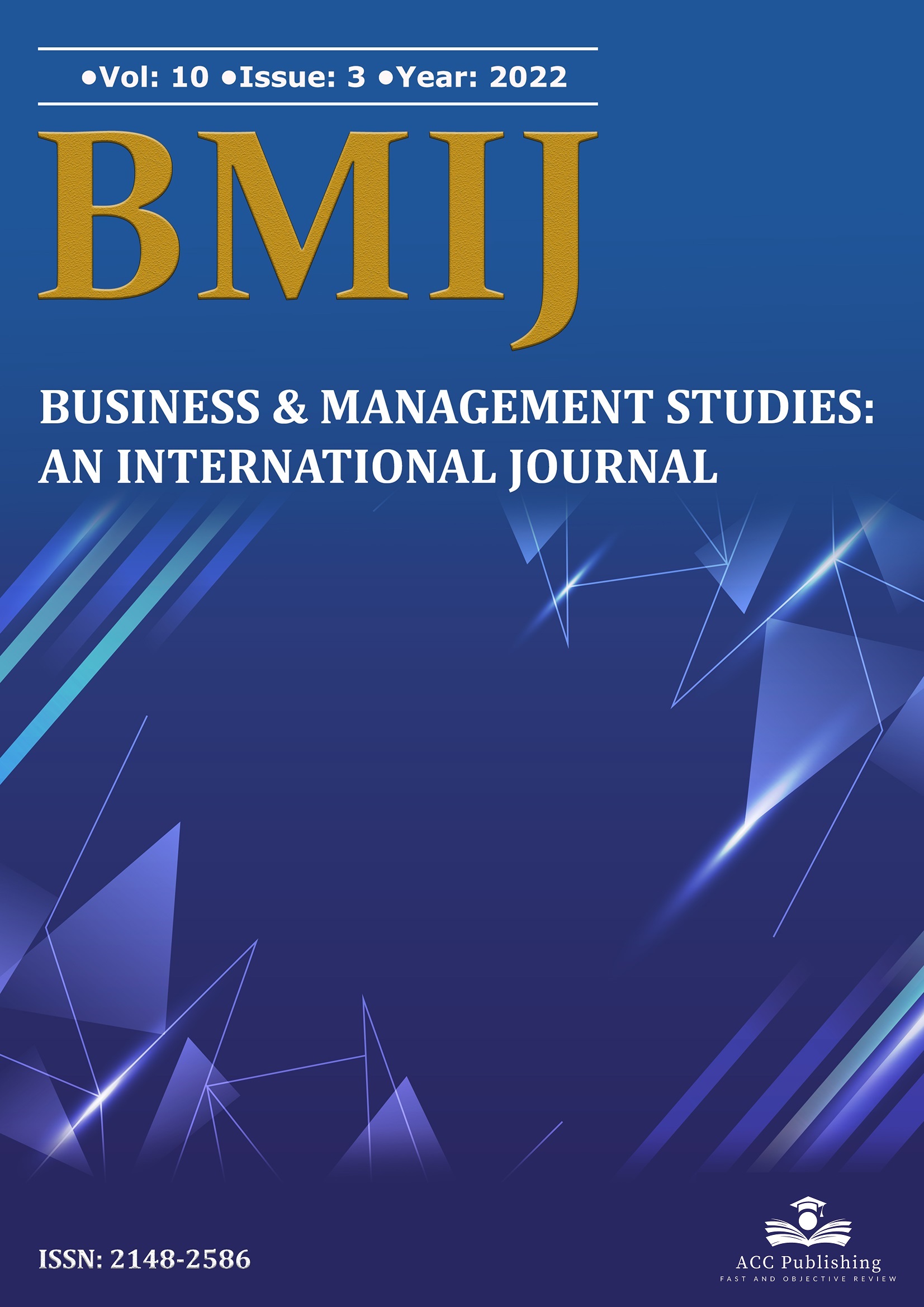The relationship between the female employment rate and inflation in Turkiye: Fourier ADL cointegration analysis

Published 2022-09-25
Keywords
- Kadın İstihdamı, Enflasyon Oranı, Fourier Eşbütünleşme
- Female Employment, Inflation Rate, Fourier Cointegration
How to Cite
Copyright (c) 2022 Ayça DOĞANER

This work is licensed under a Creative Commons Attribution-NonCommercial-NoDerivatives 4.0 International License.
Abstract
Inflation means an increase in nominal national income relative to real national income and negatively impacts the household's purchasing power. In this case, the general level of prices increases continuously and perceptibly. For this reason, women unwilling to work may tend to participate more in the workforce to support their family budgets as their incomes decrease due to high inflation. Therefore, in this study, the relationship between women’s employment rates and inflation rates in Turkey is desired to be investigated for the period 1990-2020. Fourier-based tests were used within the scope of the research. First, the stationary levels of the variables were tested with both traditional unit root tests and the Fourier ADF unit root test. As a result of the tests, it was determined that the variables were not stationary at the level but were stationary at the first differences. The Fourier ADL cointegration test was used to determine the long-term relationship between the variables.
Downloads
References
- Anyanwu, J.C. & Augustine, D. (2013). Towards Inclusive African Labor Market:Emprical Analysis of Gender Equalty in Employment and Its Implications for Policy. African Development Bank Working Paper, 1-33. https://archive.uneca.org/sites/default/files/uploaded-documents/AEC/2012/aec2012-411.pdf.
- Awan, A. G., & Sadia, R. F. (2018). Female Participation In Labor Force And Its Impact On Household And National Income: Evidence From Pakistan. Global Journal of Management, Social Sciences and Humanities, 4(4), 773-784.
- Banerjee, P., Arčabić, V. & Lee, H. (2017). Fourier ADL Cointegration Test to Approximate Smooth Breaks With New Evidence from Crude Oil Market. Economic Modelling, 67, 114-124.
- Becker, R., Enders, W. & Lee, J. (2006). A Stationary Test in the Presence of an Unknown Number of Smooth Breaks. Journal of Time Series Analysis, 27(3), 381-409.
- Bibi, A & Afzal, A. (2012). Determinants of Married Women Labor Force Participation in Wah Cantt:A Descriptive Analysis. Academic Research International, 2(1), 599-622.
- Büyükakın, T. (2008). Phillips Eğrisi: Yarım Yüzyıldır Bitmeyen Tartışma. İstanbul Üniversitesi Siyasal Bilgiler Fakültesi, 39, 133-159.
- Christopoulos, D.K. & Ledesma M.A.L.(2010). Smooth Breaks and Non-Linear Mean Reversion:Post-Bretton Woods Real Exchange Rates. Journal of International Money and Finance, 29, 1076-1093.
- Demirtaş, G., & Yayla, N. (2017). Küresel Entegrasyonun Kadın İstihdamı Üzerine Etkisi: Ampirik Bir İnceleme. Journal of Yaşar University, 12(48), 339-349.
- Eastin J. & Prakash, A. (2013). Economic Development and Gender Equality:Is There a Gender Kuznets Curve?. Cambridge University Press, 65(1), 156-186.
- Mujahid, N. (2013). Economic Determinants and Female Labour Force Participation: An Empirical Analysis of Pakistan. Developing Countries Studies, 3(7), 12-23.
- Niemi, B.T. & Lloyd, C.B. (1981). The Impact of Inflation on Labor Force Participation and The Distribution of Household Income. The American Economic Review, 71(2), 70-75.
- Özer, M. & Biçerli, K., (2003). Türkiye’de Kadın İşgücünün Panel Veri Analizi. Anadolu Üniversitesi Sosyal Bilimler Dergisi, 3 (1), 55-85.
- Özkök, C.S. & Polat, M. (2020). Ekonomik Büyüme, Enflasyon ve Kentleşmenin Kadınların İşgücüne Katılımına Etkileri:Türkiye Üzerine Bir Uygulama. Global Journal of Economics and Business Studies, 9(17), 63-76.
- Philips, A.W. (1958). The Relationship between Unemployment and the Rate of Change of Money Wage Rates in the United Kingdom, 1861-1957. Economica, 25(100), 283-299.
- Sertçelik, Ö. (2021). Kadınların İşgücüne Katılım Oranının Belirleyicileri:Türkiye İçin Yapısal Kırılmalı Zaman Serisi Analizi. R&S-Research Studies Anatolia Journal, 4(2), 91-102.


